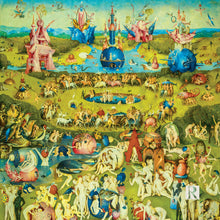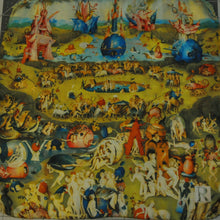The Garden of Earthly Delights is a triptych oil painting on oak panel painted by the Early Netherlandish master Hieronymus Bosch, housed in the Museo del Prado in Madrid since 1939.
As so little is known of Bosch's life or intentions, interpretations of his intent have ranged from an admonition of worldly fleshy indulgence, to a dire warning on the perils of life's temptations, to an evocation of ultimate sexual joy. The intricacy of its symbolism, particularly that of the central panel, has led to a wide range of scholarly interpretations over the centuries. Twentieth-century art historians are divided as to whether the triptych's central panel is a moral warning or a panorama of paradise lost. Peter S. Beagle describes it as an "erotic derangement that turns us all into voyeurs, a place filled with the intoxicating air of perfect liberty".
As so little is known of Bosch's life or intentions, interpretations of his intent have ranged from an admonition of worldly fleshy indulgence, to a dire warning on the perils of life's temptations, to an evocation of ultimate sexual joy. The intricacy of its symbolism, particularly that of the central panel, has led to a wide range of scholarly interpretations over the centuries. Twentieth-century art historians are divided as to whether the triptych's central panel is a moral warning or a panorama of paradise lost. Peter S. Beagle describes it as an "erotic derangement that turns us all into voyeurs, a place filled with the intoxicating air of perfect liberty".






